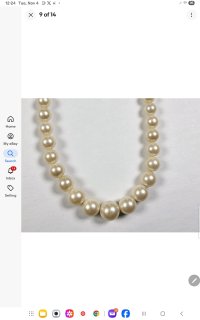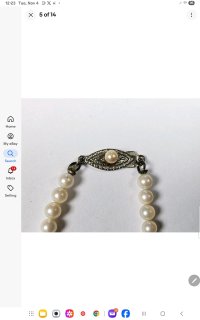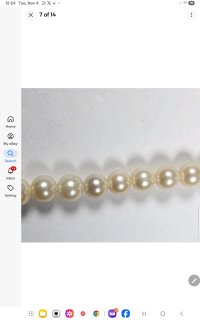Do you see that coarse texture that is visible when the pearls are so enlarged? That is pretty much what you'd see looking at imitation pearls under a 10x loupe. Real pearl nacre looks smooth under 10x magnification.
Also the combination of all these traits:
• All the pearls look exactly the same-- same size (except for the one center pearl), color, luster. In a real pearl necklace you'd see more variation, including varying overtones in more lustrous pearls. Real pearls in a necklace are not all going to be the same size-- they are made by living mollusks, so they don't come out a calibrated size. Typically a necklace would have pearls ranging in size within 0.5mm (e.g. 6.5-7.0mm) And graduated strands don't just have one larger center pearl.
• The lack of any blemishes typically found in real pearls. Even a very good strand will have some minor pinpricks.
• They are not knotted between pearls (but this can be true of real pearls-- however, usually at least the end few pearls will be knotted.)
• Cheaply finished with the bead tips instead of gimp (but real pearls are sometimes finished that way, so it's not definitive).
• Clasp looks like base metal.
All of it put together screams "fake."






